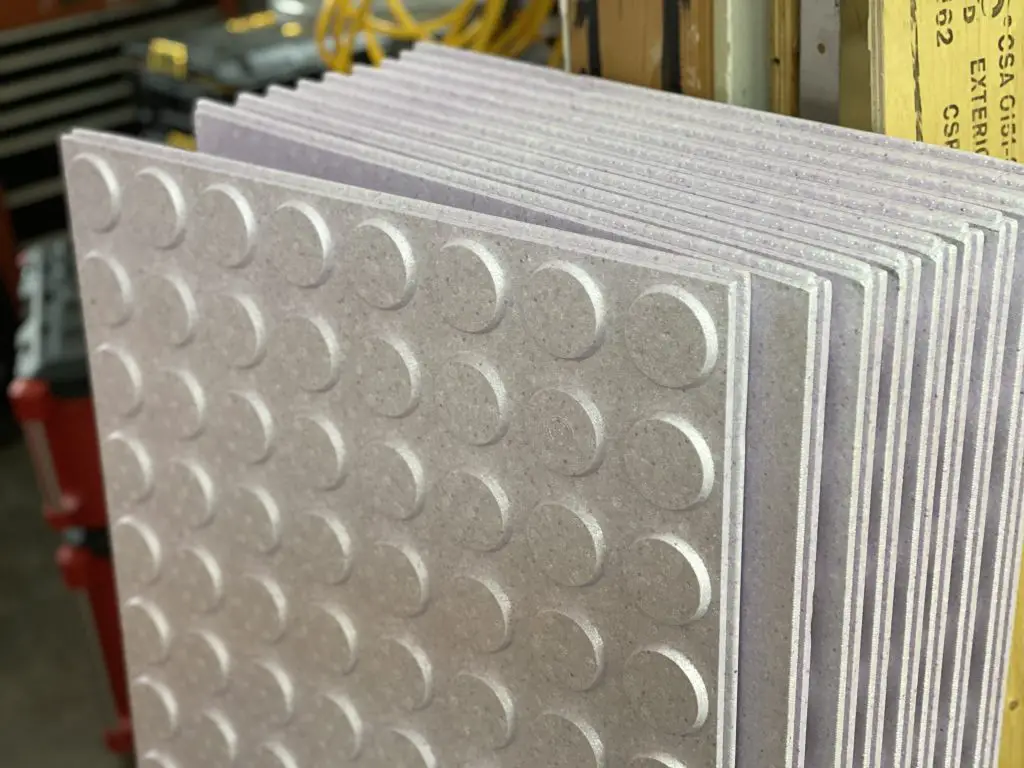Q: Where can I find the Insul-Armor all-foam subfloor panels you mentioned in a video and on your website? I’m finishing my basement and want to do the floor as well as possible. Can these be used under any kind of flooring?

A: Insul-Armor is the best basement subfloor panel I’ve seen so far (for most situations) and I make it my business to keep on top of these things. Products for basement finishing in general are constantly improving, and the light weight, high insulation value and easy cutting options of DRICORE Insul-Armor are impressive. Conventional wood-and-plastic subfloor panels work well, but Insul-Armor’s light weight is not to be dismissed. Instead of having to haul potentially thousands of pounds of conventional panels downstairs, you’re looking at less than 1/10th the weight for Insul-Armor.
The all-foam construction also means there’s no organic material to feed mold in the event of some kind of moisture leak, and these foam panels are twice as large as the regular type. The only drawback with Insul-Armor is the fact that it can’t be used on its own under carpet. That’s not a big deal in my book because I always recommend against carpet in basements because they’re so susceptible to moisture problems.
Insulation-Armor is for use under hard flooring such as laminate, luxury vinyl plank or tile, engineered click hardwood or any kind of rigid floor that does not need to be fastened down. If you do want to use Insul-Armor under carpet you’ll need to put down some kind of plywood subfloor on top to prevent the foam from squishing under foot with carpet. If you have your heart set on carpet, you’d probably be better off using one of the more traditional wood-and-plastic subfloor panels because it needs no additional strength. Insul-Armor is relatively new, so while it is available in different places, do some online searching to determine local options. Availability is pretty wide now and getting wider.
Are you skeptical, thinking that how could foam support any kind of load without compressing over time? Well, it can support residential loads and easily. In tests I’ve run the compressive strength of the foam is more than enough to support any kind of residential loads as long as something hard is on top of the panels to spread the load. Laminate and even luxury vinyl plank and tile work well over Insul-Armor.
In fact, the foam is dense enough (it’s roughly three times as regular rigid foams) that non-load-bearing partition walls can be installed on top of Insul-Armor with no issues. Just drill down through the bottom plate of your wall, through the foam, then into your concrete floor before securing the wall with Tapcon screws. These can bite directly into concrete in predrilled holes.
Any drawbacks? Not that I’ve discovered so far. The product does cost 10% to 20% more than traditional subfloor panels, but that’s insignificant when you look at the entire cost of basement finishing, and the ramifications of living with cold floors and poor indoor air quality caused by an inadequate subfloor.
I made the Insul-Armor video below a while back as I was doing research for my popular online basement finishing course. Like I said, I’m impressed.



